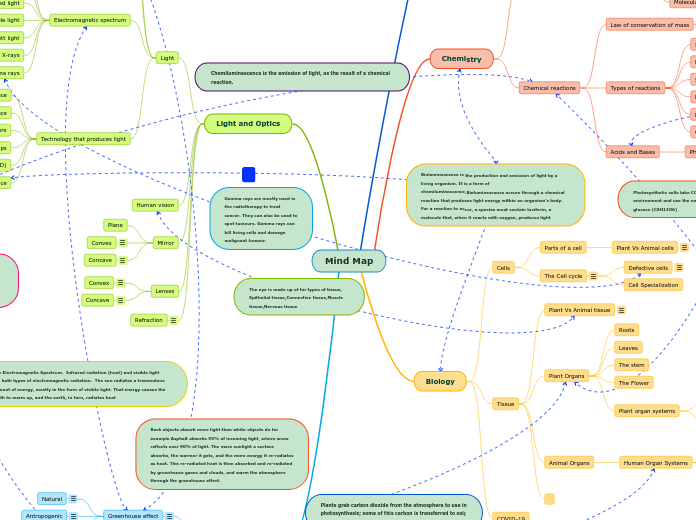
ions
Metals, multi-valent metals, non-metals
Ionic compounds
When a cation (metal) combines with an anion (non-metal)
Multivalent Ionic compounds
Ionic compounds with multivalent elements are almost the same as binary ionic compounds, except that the positive ion has more than one possible charge. These ions include copper, gold, iron, and lead. ... When naming ionic compounds with these multivalent elements, the name stays the same, except a Roman numeral is added.
Ionic compounds with a polytonic ion
Polyatomic ions are ions which consist of more than one atom. For example, nitrate ion
Molecular compounds
Made of a non-metal and a non-metal, covalent bonds are created because electrons are being sharedTo name a molecular compound, prefixes are used. ex. Mono, di, tri, tetra, penta, hexa, octa....
diatomic molecules
Chemical reactions
Law of conservation of mass
The law of conservation of mass states that mass in an isolated system is neither created nor destroyed by chemical reactions or physical transformations. According to the law of conservation of mass, the mass of the products in a chemical reaction must equal the mass of the reactants.
Balancing equations
Types of reactions
Synthesis
element+element→Compound
Decomposition
compound→element=element
Single Displacement
element+compound→new element+new compound
Double Displacement
compound+compound→new compound+new compound
Neutralization
Acid+Base→H2o+Co2
Combustion
Fuel+O2→H2O+Co2
Acids and Bases
PH scale and other indicators
Ph paperblue litmus red litmusbromothymol bluephenolphthalein universal indicator
Cells
Parts of a cell
Plant Vs Animal cells
plant cellsCell Membrane Cytoplasm Endoplasmic Reticulum Ribosomes Mitochondria Lysosomes Vacuoles Golgi Body NucleusAnimal cellscell membranenucleusnucleolusnuclear membranecytoplasmendoplasmic reticulumGolgi apparatusribosomesmitochondriacentriolescytoskeletonvacuolesvesicles.
The Cell cycle
InterphaseMitosisprophasemetaphaseanaphasetelophase 3.Cytokenisis
Defective cells
Mutations in the genes that control cell division can trigger an abnormal cell cycle → Cancer
Cell Specialization
Tissue
Plant Vs Animal tissue
Plant tissueEpidermal tissueGround tissueVascular tissuemeristematic tissueAnimal tissueEpithelial tissueConnective tissueMuscle tissueNervous tissue
Plant Organs
Roots
Leaves
The stem
The Flower
Plant organ systems
Roots
Shoots
Animal Organs
Human Organ Systems
Digestive system
Respiratory System
Immune system
COVID-19
Light
Additive Colour theory
different percentages of the additive secondary colours of light are used to generate different colourswhite light is created when all the additive colours of light mixthe additive primary coloursRed,Green,Bluethe secondary colours producedcyan,magenta,yellow
Subtractive Colour theory
Electromagnetic spectrum
Radio waves
Microwaves
infrared light
Visible light
Ultraviolett light
X-rays
Gamma rays
Technology that produces light
Incandescence
Florescence
Phosphors
Discharge lamps
Light emitting diode (LED)
Chemiluminescence
Human vision
Mirror
Plane
Convex
the mirrors makes the reflected rays spread apart (diverge)
Concave
the mirror makes the reflected rays meet at one spot (converge)
Lenses
Convex
converging- refracts light to focal point
Concave
Diverging- refracts light so that it appears to come from a focal point
Refraction
The bending of light when it passes between one substance to another at an angel
Greenhouse effect
The greenhouse effect is caused by the atmospheric accumulation of gases such as carbon dioxide and methane, which contain some of the heat emitted from Earth's surface.
Natural
Natural greenhouse gasses water vapour- water absorbs heat, then releases it-more water vapour= warmer temperaturesCarbon Dioxide- released naturally via the carbon cycle Methane- naturally produced by low O2 areas (swamplands)Nitrous oxide-Naturally produced via the nitrogen cycle
Antropogenic
Anthropogenic sources result from energy-related activities (e.g., combustion of fossil fuels in the electric utility and transportation sectors), agriculture, land-use change, waste management and treatment activities, and various industrial processes.
Sources Vs Sinks
sources-something that contains and releases said element/compound into the atmosphere ex. carbon source- vehicles, exhaling Sinks-something that takes in said element/compound from the atmosphere and stores it ex.Carbon sink- plants, water
Human causes
Humans are increasingly influencing the climate and the earth's temperature by burning fossil fuels, cutting down rainforests and farming livestock. This adds enormous amounts of greenhouse gases to those naturally occurring in the atmosphere, increasing the greenhouse effect and global warming.
Effects
Adaption and mitigation
Climate change mitigation means avoiding and reducing emissions of heat-trapping greenhouse gases into the atmosphere to prevent the planet from warming to more extreme temperatures. Climate change adaptation means altering our behaviour, systems, and in some cases ways of life to protect our families, our economies, and the environment in which we live from the impacts of climate change.
Combustion